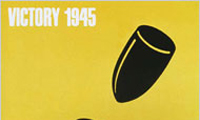 Shigeo Fukuda, Graphic Designer, Dies at 76
Shigeo Fukuda, Graphic Designer, Dies at 76By STEVEN HELLER | Published: January 19, 2009
Shigeo Fukuda, an influential Japanese graphic designer who was known for acerbic antiwar and environmental advocacy posters that distilled complex concepts into compelling images of logo-simplicity, died in Tokyo on Jan. 11. He was 76.
The cause was a stroke, an article in the Japanese newspaper The Yomiuri Daily reported.
Mr. Fukuda was expert at communicating messages using minimal graphic means. Although he admired Japanese woodblock traditions, his spare style was universal, his symbolism bridging cultural divides.
He was a popular figure among American designers. His book “Visual Illusion” (Rikuyosha Publishing, 1982) was a virtual textbook for designers in the United States.
Although he had some commercial clients, most of his work was for social and cultural concerns, like the 1970 World’s Fair in Osaka, for which he designed the official poster.
In Japan, poster design is not as aggressively sales oriented as it is in the West; rather, it is a form of cultural communication and often a vehicle for advocacy on political and social issues. In 1980, for example, Mr. Fukuda designed a poster for Amnesty International “I believe that in design, 30 percent dignity, 20 percent beauty and 50 percent absurdity are necessary,” he once told the Japanese design magazine Idea.showing a drawing of a clenched fist interwoven with barbed wire.
And yet, in work reminiscent of the pictorial illusionist M. C. Escher’s, Mr. Fukuda often used humor as a tool. Many of his best-known designs are visual puns that evoke double readings. One is a widely reproduced satirical poster, “Victory 1945,” showing an airborne black artillery shell aimed directly at the opening of the cannon barrel from which it was shot.
During the 1960s Mr. Fukuda illustrated a column on visual magic in the Asahi newspaper called “Ryu Mita Ka?” (“Have You Seen the Dragon?”). He often used a comic conceit from an 1861 book “Faces of Five People Made to Look Like Ten,” where heads are turned topsy-turvy so that they read as faces upside down and right side up
“I believe that in design, 30 percent dignity, 20 percent beauty and 50 percent absurdity are necessary,” he once told the Japanese design magazine Idea.
Graphic wit was part of Mr. Fukuda’s upbringing. Born in 1932 in Tokyo to a family of toy manufacturers, he enjoyed making origami as child. Yet as a young man in the late 1940s and ’50s he developed a keen interest in minimalist Western graphic design known as the Swiss Style. He graduated from the Tokyo National University of Fine Arts and Music in 1956. (Information about his survivors was not available.)
While intensely serious about the responsibility of design to convey clear concepts, he could be visually elusive. “Fukuda is not a communicator who conforms to the principles of accessibility,” the American designer Seymour Chwast wrote in the introduction to “Masterworks” (Firefly Books, 2005), a monograph about Mr. Fukuda. “With few exceptions, his purpose is to mystify.”
In addition to posters, Mr. Fukuda created exhibit displays using wryly composed sculptures. For a coffee company’s marketing showroom in Tokyo, he designed a mixed-media sculpture of Mount Fuji made from hundreds of coffee cans, with multicolored, expressionless mannequins holding steaming cups of coffee or burlap sacks filled with precious beans.
Mr. Fukuda was the first Japanese designer inducted into the New York Art Directors Club Hall of Fame. He was also the subject of a major show at the I.B.M. Gallery in New York in 1967 organized by Paul Rand, designer of the I.B.M. logo. The Asian Art Museum of San Francisco mounted an exhibition in 1987, and in 1999, the Japan Foundation in Toronto presented the show “Visual Prankster: Shigeo Fukuda.”
Mr. Fukuda was indeed a prankster throughout his life. To reach the front door of his house, on the outskirts of Tokyo, Mr. Chwast recalled, a visitor had to walk down a path to a door that appeared to be far away. In fact, appearances were deceiving because the front door was only four feet high. Inside, Mr. Fukuda would emerge from a concealed white door exactly the same color as the wall to offer the visitor a pair of red house slippers.
 Shigeo Fukuda, Graphic Designer, Dies at 76
Shigeo Fukuda, Graphic Designer, Dies at 76